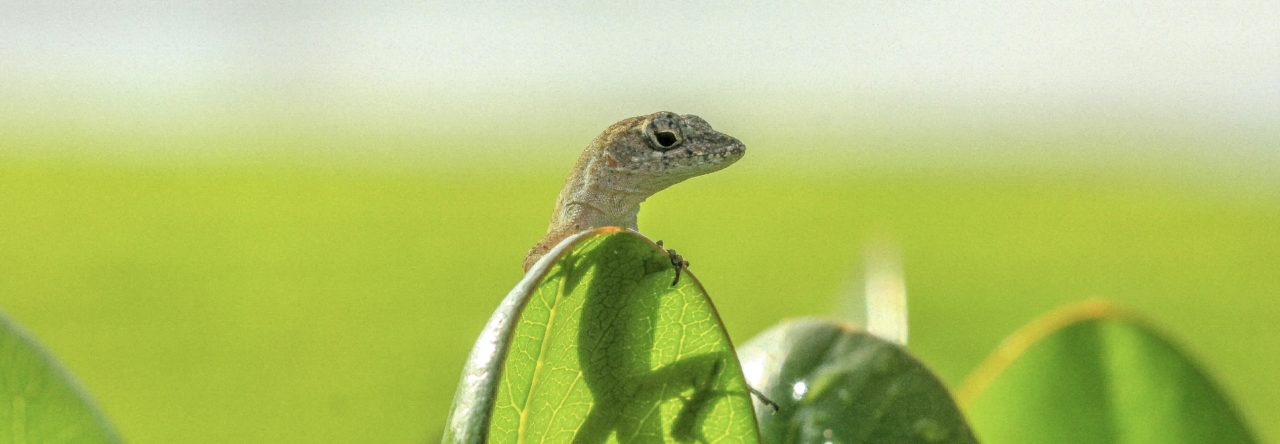
Before you read the article, name that anole
I’m told that in the old days, all kinds of critters would show up in fruit shipments from tropical regions, but now with pesticides and processing, it’s much rarer. The BBC reports the story of one such recent event:
The reptile, which was about 8ins (20cm) long, was found at Riverford Organic Farms, in Buckfastleigh.
Staff said it was the first lizard they had found since starting to import bananas from the Dominican Republic about a decade ago.
The anolis lizard, which feeds on insects, was sent to Paignton Zoo and is expected to be added to its collection.
Amanda Whittington, from the farm, said the animal had been stored in a container since it was found on Thursday.
She said: “A woman was packing bananas into our fruit boxes and out it popped. It gave her a bit of a shock.
“We then caught it and asked Paignton Zoo what to do.
“It then escaped into the customer services department, but we then managed to catch it again and fed it some crickets.”
‘Certainly a survivor’
She said the bananas took a couple of weeks to transport by boat from the Dominican Republic.
Reptile keeper Rod Keen said: “There are hundreds of species of anolis lizard, which are related to iguanas.
“It is certainly a survivor, as it’s come thousands of miles in various methods of transport and spent time in cool rooms,” a spokesperson added.
The reptile will spend a standard six month period in quarantine at the zoo, and will probably be released into one of the tropical houses.
- Evolution in Real Time on Lizard Island - March 23, 2025
- Spider Snags Adult Anolis osa - March 22, 2025
- An Homage to the Green Anoles of New Orleans - March 21, 2025


Miguel Landestoy
The picture can’t be enlarged, but certainly Anolis chlorocyanus does it again. The rather plain (unpatterned) head and neck helps on its ID. DR is, if not the top, one of the main banana providers, basically to the european market (Holland, France and England). Most of the production is centered in the northwest and southwest. Basically in the “north island”, the range where A. chlorocyanus lives; even at the southwestern province of Barahona, the crop is planted largely in the Valle de Neyba (in the middle of the two “islands”), where the species has also been recorded.
Peter Mudde
We don’t get a lot of ‘banana-stow-aways’ anymore nowadays. It’s abit too cold in bananaboat now, I’m told. But there is regular influx of stow-away animals from live plants., freshly imported from Central America. Yucca-stems, large Heliconia’s ( as used in Zoo’s and similar tropical environments here..) and all kinds of other large plants. A friend of mine worked with the Dutch plants-health control, checking those imported plants for plagues.. and built quite a collection of those stowaways including Anolis species like limifrons, humilis, cupreus and biporcatus as well as several species of frogs. Too bad only occasionally the stow-aways did come in couples..